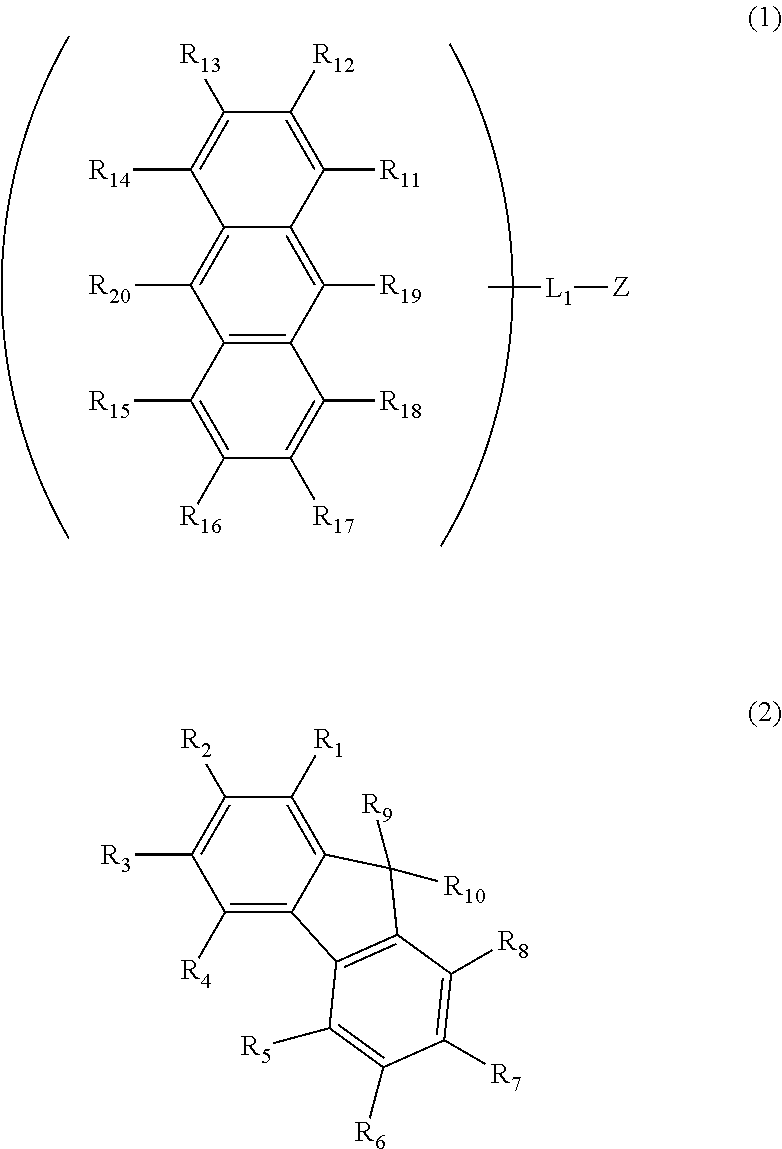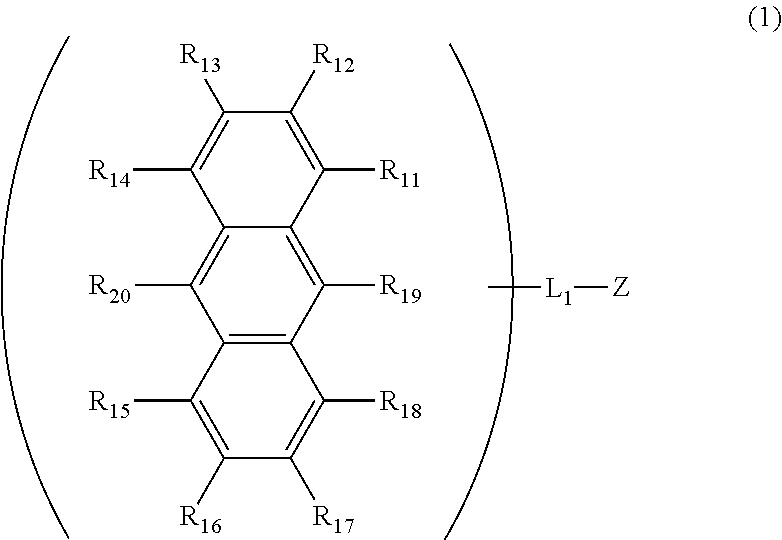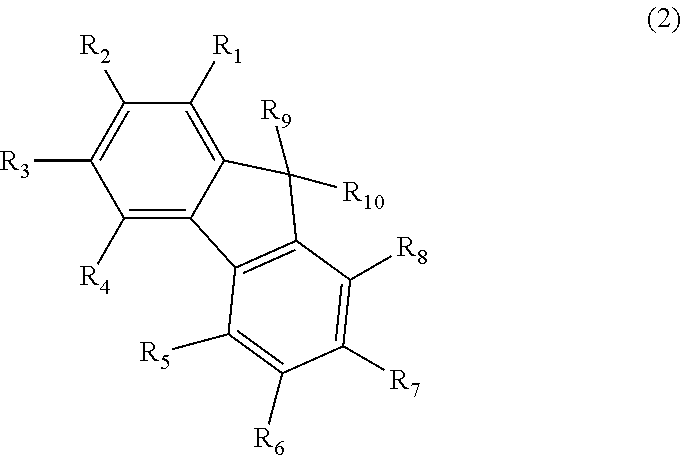Anthracene derivative and organic electroluminescent element using same
an anthracene derivative and organic technology, applied in the direction of anthracene dyes, pyrene dyes, organic chemistry, etc., can solve the problems of significant deterioration of characteristics, high driving voltage, and low luminance and luminous efficiency. achieve the effect of high luminous efficiency
- Summary
- Abstract
- Description
- Claims
- Application Information
AI Technical Summary
Benefits of technology
Problems solved by technology
Method used
Image
Examples
synthesis example 1
Synthesis of Intermediate A
[0152]An intermediate A was synthesized according to the following scheme.
(A-1) Synthesis of ethyl 4-bromo-2-iodobenzoate
[0153]36 mL of tetramethylpiperidine was added to 500 mL of tetrahydrofuran (THF) in an argon atmosphere. After cooling the mixture to 0° C., 90 mL of a 2.6 M hexane solution of n-BuLi was added dropwise to the mixture, and the resulting mixture was stirred at 0° C. for 10 minutes.
[0154]Separately, a 1.6 M pentane solution of n-BuLi was added dropwise to 440 mL of a THF solution (0.5 M) of zinc chloride at 0° C. in an argon atmosphere, and the mixture was stirred for 30 minutes. After cooling the tetramethylpiperidine solution to −78° C., the di-t-butylzinc solution prepared separately was added dropwise to the tetramethylpiperidine solution. The reaction solution was heated to 0° C., stirred for 30 minutes, and cooled to −78° C. After the dropwise addition of 22.9 g of ethyl 4-bromobenzoate to the reaction solution, the mixture was stir...
synthesis example 2
Synthesis of Intermediate B
[0158]An intermediate B was synthesized according to the following scheme.
[0159]An intermediate B was synthesized in the same manner as the intermediate A, except that methyl 2-bromobenzoate was used instead of ethyl 4-bromobenzoate.
synthesis example 3
Synthesis of Intermediate C
[0160]An intermediate C was synthesized according to the following scheme.
(C-1) Synthesis of 2-acetyl-1-naphthyl trifluoromethanesulfonate
[0161]A flask was charged with 186 g of 1′-hydroxy-2′-acetonaphthone and 18.2 g of 4-dimethylaminopyridine in an argon atmosphere. After the addition of 4 L of methylene chloride, the mixture was cooled to −78° C. After the addition of 161 g of 2,6-dimethylpyridine, 339 g of trifluoromethanesulfonic anhydride was added dropwise to the mixture. The resulting mixture was stirred for 5 hours while heating the mixture to room temperature. A solid that precipitated was filtered off, washed with water and methanol, and dried to obtain 286 g (yield: 90%) of triphenylenyl trifluoromethanesulfonate.
(C-2) Synthesis of 2-acetylnaphthalene-1-boronic acid pinacol ester
[0162]286 g of 2-acetyl-1-naphthyl trifluoromethanesulfonate, 251 g of bis(pinacolato)diboron, 22.0 g of [1,1-bis(diphenylphosphino)ferrocene]dichloropalladium(11), and...
PUM
| Property | Measurement | Unit |
|---|---|---|
| Structure | aaaaa | aaaaa |
| Fluorescence | aaaaa | aaaaa |
| Phosphorescence quantum yield | aaaaa | aaaaa |
Abstract
Description
Claims
Application Information
 Login to View More
Login to View More - R&D
- Intellectual Property
- Life Sciences
- Materials
- Tech Scout
- Unparalleled Data Quality
- Higher Quality Content
- 60% Fewer Hallucinations
Browse by: Latest US Patents, China's latest patents, Technical Efficacy Thesaurus, Application Domain, Technology Topic, Popular Technical Reports.
© 2025 PatSnap. All rights reserved.Legal|Privacy policy|Modern Slavery Act Transparency Statement|Sitemap|About US| Contact US: help@patsnap.com



